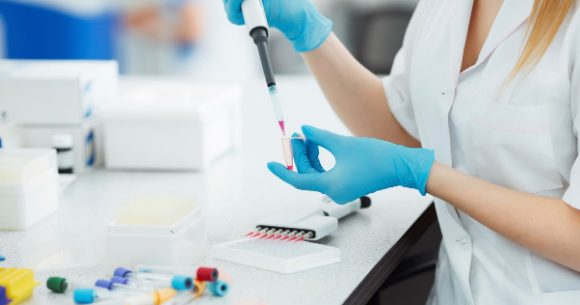Pipettes are essential instruments for accurately measuring and dispensing reagents. But that precision doesn’t do much good if the measurements aren’t made exactly.
Certain frequent pipetting errors can directly affect this accuracy and hamper the reproducibility of the assays.
In this post we tell you what those frequent errors are when pipetting and how we can avoid them.
FREQUENT MISTAKES WHEN PIPETTING AND HOW TO AVOID THEM.
MISTAKE # 1: NOT EVALUATING THE VISCOSITY OF THE SAMPLE
It is important to pay attention to the physical properties of the sample , since these directly affect the volume dispensed. For dense samples containing large, viscous molecules, they tend to adhere to the tip surface, dispensing more slowly. Conversely, samples containing eg ethanol, being less viscous and more volatile, will dispense more quickly and tend to evaporate.
Some of the ways to minimize these effects are through the use of ultra low retention pipette tips , which contain a hydrophobic plastic additive that prevents liquid from adhering to the inside of the tip, or by reverse pipetting .
MISTAKE # 2: DISPENSING LIQUID REAGENTS TOO QUICKLY
Pipetting too quickly increases the probability of making mistakes when dispensing the correct volumes, in addition to favoring the contamination of the pipettes, among others.
MISTAKE # 3: PIPETTING DIFFERENT SAMPLES WITH THE SAME TIP
If the same tip is used to extract and dispense a sample and then immediately pipet another sample without changing it, contamination of the samples can be induced.
MISTAKE # 4: FAILING TO MAINTAIN PIPETTES PROPERLY
Pipettes can lead to error in volume measurement or cause contamination if not properly maintained.
Daily cleaning with 70% ethanol is essential, as well as the use of different pipettes for general tests and for more specific tests such as those that require RNAse-free environments.
MISTAKE # 5: NOT CALIBRATING THE PIPETTES ON TIME
It is recommended to calibrate the pipettes at least once a year, and ideally every 3 months, to ensure that the measurements made with them are accurate.
MISTAKE # 6: PIPETTING FROM THE WRONG ANGLE
Correct pipetting angles are 90º for aspiration and 45º for dispensing.
MISTAKE # 7: SUCKING AIR
Although it seems simple, it is a common mistake to pay attention to, since in addition to pipetting an inaccurate volume, when aspirating air, the liquid can enter the neck of the pipette.
MISTAKE # 8: EXCESSIVELY SUBMERGING THE PIPET TIP WHEN ASPIRATING THE SAMPLE
Liquid should be aspirated from the sample surface, being careful not to suck in air. For reference, 1-5mL pipettes should be inserted about 5-6mm below the meniscus, while smaller volume pipettes will only be inserted about 2-3mm.
MISTAKE # 9: STORING PIPETTES HORIZONTALLY
Pipettes should be stored in an upright position, preferably on specially designed supports. This prevents liquids that may have entered the pipette neck from escalating and causing contamination and / or corrosion phenomena.
MISTAKE # 10: NOT USING THE PROPER TIPS
The size of the tips must be adapted to each specific pipette to ensure the precision and accuracy of the measurements, and to avoid contamination. If the tips are not adjusted properly, air can escape when aspirating and dispensing the liquid sample, resulting in inaccurate results.
MISTAKE # 11: NOT PRE-WETTING THE TIPS
Submerging the tips increases the humidity inside the tips, thus minimizing the evaporation of the solution. This practice is usually recommended for volumes greater than 10uL.
MISTAKE # 12: NOT TAKING INTO ACCOUNT THE AMBIENT TEMPERATURE AND / OR THE SAMPLE TEMPERATURE
The calibration of the pipettes is usually done at room temperature, so if working at temperatures significantly lower or higher, the measurement will not be accurate.
Sample temperature can also cause dispensed volumes to vary.
MISTAKE # 13: APPLYING THE PIPETTING TECHNIQUE INCORRECTLY
The main rules for pipetting correctly can be summarized as:
- Pipette slowly and gently
- Hold the pipette upright when aspirating the sample
- Dip the tip slightly into the sample when aspirating
- Dispense the liquid on the side wall or on the liquid at a 45º angle
